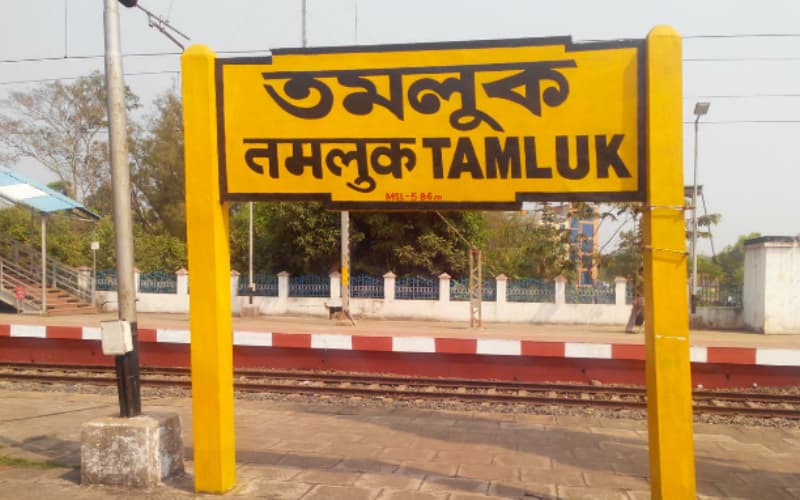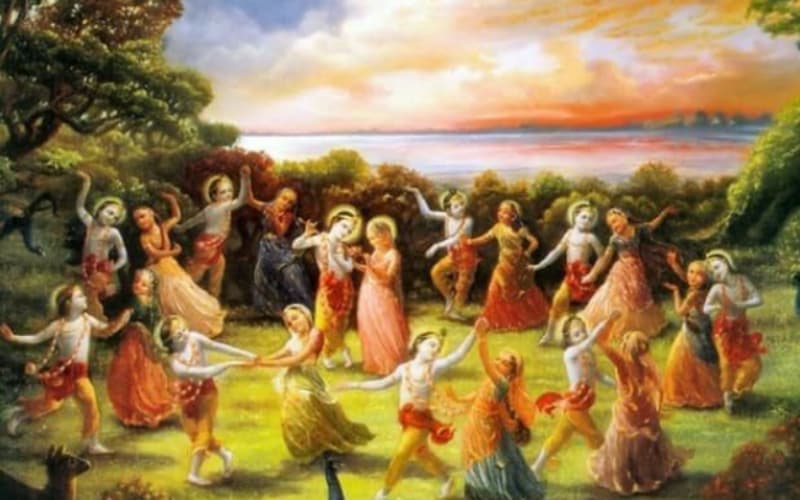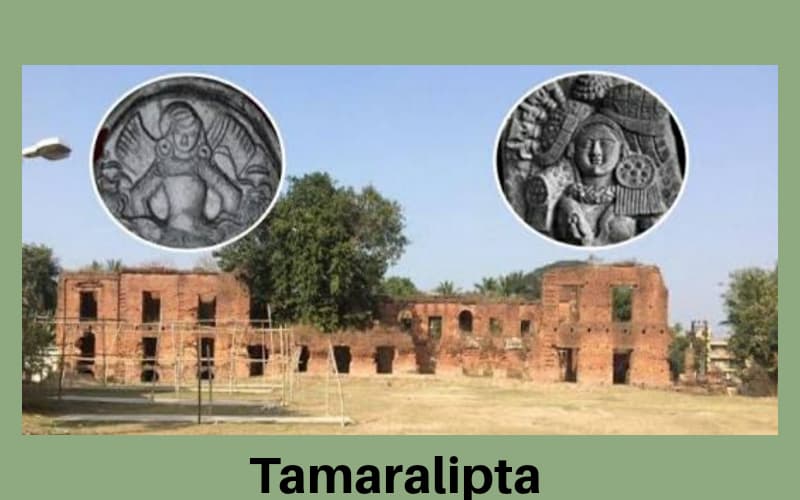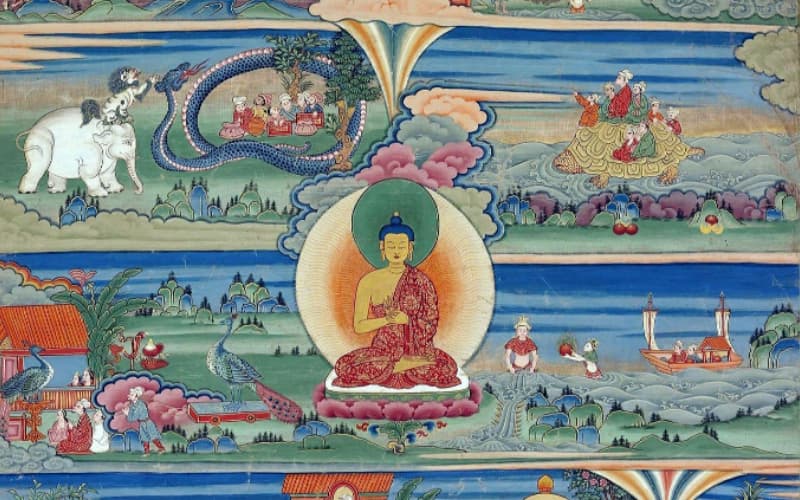Part - I

At approximately 85 kilometers in a south/south-westerly direction from Calcutta, on the banks of the Rupnarayan River, a tributary of the Hooghly, stands the town of Tamluk. The municipality is the headquarters of the East Midnapore district and is home to close to a million people today. Hidden somewhere beneath a typical Indian small town, is an ancient and amazing history that traces back to the days of the Mahabharata. For most scholars and experts agree that what today exists as Tamluk, represents what remains of the ancient, great port city of Tamralipta.

Early Vaishnav texts contain a fascinating story. One day, as Lord Krishna was engaged in raasleela with the gopikas, Surya Dev came up in the sky from the eastern coast of India. Seeing Lord Krishna in intimate positions with the gopikas, the Sun God felt embarrassed and blushed copper red (Tamra = copper) and returned and hid in the eastern sea (Lipta = covered). The coast where Surya went down thus got the name “Tamralipta.”
In the great text of Mahabharata, while recounting the names of great kingdoms of Bharatavarsha, Sanjay mentions Tamralipta to King Dhritarashtra. It is said that the kingdom was ruled by a noble king Mayuradhwaj. After the battle of Kurukshetra, the Pandavas were performing an ashwamedha yagna and released a horse as part of the ritual. This horse was captured by prince Tamradhwaj, the son of king Mayuradhwaj. The Pandava army caught up and challenged Tamradhwaj to release the horse and accept Pandava suzerainty. Prince Tamradhwaj refused and fought the Pandava army led by Arjuna and his talented Babhrubahan. The might of the Pandava army could not defeat the warrior prince who immobilized his enemies using a powerful weapon and went back to his kingdom with the Pandava horse.
His father was though much upset on hearing about the conflicts. Just then, Lord Krishna and Arjuna, dressed as hermits arrived at the royal palace. Lord Krishna told king Mayuradhwaj that his son had been captured by an evil rakshasa who would only let the boy go if he was gifted the right portion of the king’s body which had been sawed off by his son and wife. Without hesitation, Mayuradhwaj lay down on a table and asked his son and wife to saw his body in half. Impressed with his nobility, Lord Krishna now revealed his heavenly form. The king accepted Yudhistira as his overlord after this and joined the Pandava army on their quest, making his brave son as the new king.
While it is difficult to ascertain the veracity of the above tales, it is a true fact that there is scientific evidence to support the ancient antiquity of the region. The nearby mines of Ghatshila in the Singhbum region have been producing rich copper from more than 2500 years ago. And archaeological excavation has revealed the presence of civilization more than 2000 years ago. There is also a famous Kali temple called Bargabhima Mandir which myths say was built by the great Pandava prince Bhima. In fact, the nearby areas still have worship of Bhima and a great fair, known as “Bhim Mela” (fair of Bhima) happens every year during February/March.

It is said that under the rule of King Tamradhwaja (meaning copper flag bearer), the kingdom reached its peak. The copper mining grew and added to the kingdom’s treasury. The ancient Rupnarayan back then probably flowed straight into the Bay of Bengal through an intricate network of estuaries which enabled large sea-faring ships to dock at Tamralipta (also referred to Tamralipti). The ships carried back copper and also silk and cotton clothes, indigo and earthenware to Ceylon, south-east Asia and far-east Asia. It is said that one of the principal objectives of Samrat Asoka’s attack on Kalinga was to capture the port city of Tamralipta. During the heyday of the Mauryan rule, a great stone road connected Pataliputa, the Mauryan capital (believed to be today’s Patna) to Tamralipta. This road was built to ensure easy movement of copper and other export items to the port of Tamralipta.
From Samrat Asoka’s time i.e. about 3rd century BCE, Tamralipta reigned supreme as one of the greatest port towns of Asia. But this ancient port town was not just sending out ships loaded in copper. Tamralipta became the gateway for the spread of Buddhism from India to Ceylon, south-east and Far East Asia. Samrat Asoka’s son (or brother) Mahendra and daughter (or sister) Sanghamitra are known to have sailed to Ceylon(Sri Lanka) and Suvarnabhumi (Thailand) from Tamralipta carrying seeds of the Bodhi Briksha (the peepul tree under which Gautama Buddha attained nirvana) and holy Buddhist scriptures. Mahavamsa, the epic of Sri Lanka, records that it took fourteen days for the seeds of the holy tree to arrive from Pataliputra to Ceylon of which the sea voyage from Tamralipta took 7 days.

The Jataka tales of Buddhism regularly refer Tamralipta as the port from where voyages went to south-east Asia carrying Buddhist missionaries. Tamralipta is mentioned in the writings of famous Chinese travelers like Fa-Hien, Hiuen Tsang and Itsing as not only a major port but also one of the most important centers of Buddhist learning. It is believed that the Indian port city of Taluctae mentioned by the Roman philosopher and traveler Pliny (2nd century CE) is the same as Tamralipta. During the rule of the Gupta Kings, the importance of Tamralipta grew even more. Ships from the port traveled down the Indian coast and then turning west from Ceylon, voyaged onwards to Arabia, Africa and the Mediterranean. Fa-Hien visited Tamralipta in the 5th century CE and wrote that he found 24 monasteries and more than a thousand Buddhist monks in the port city. A 6th century inscription records donations of large tracts of uncultivated lands to the Buddhist guru Shakyabhikshu by the Gupta administrator of the town.
By the end of the 7th century CE though, the great port city started falling into decline. It is not clear what led to this fall from grace. After King Skandagupta’s death in 467 CE, the great Gupta Empire gradually disintegrated. A succession of weak kings saw vassal states rebelling. In the late 5th century, invasion by Huns in the north-western parts of the empire hastened the end of the great dynasty’s rule. With the country torn by strife and war, it is likely that trade suffered. It is also believed that it was around this time that the Rupnarayan started changing course, moving east-ward and finally ending up joining the down-streams of the Bhagirathi (Hooghly). With the older course drying up, the port became less and less navigable and its glory was forever lost. Tamralipta vanished from history.
So great was the erasure that no traces of this great port city remained and it was completely forgotten. It was in the late nineteenth century that an eminent Bengali scholar by name of Gour Das Bysack carried out excavations in the area and published a report in the journal of the Asiatic Society of Bengal in 1889 which once again brought Tamralipta back into the light. However, the British chief of the Archaeological Survey of India of the day ignored the report and no further work was undertaken until the 1920s. This was followed by further excavations in the 1950s and ‘70s. Excavations of 1954-55 dug out Roman amphorae and Greco-Roman gold coins proving the far spreading reach of ancient India.
Today, nothing remains of this ancient great port city except some of the excavated artifacts which are housed in the local museum. But standing on the banks of the Rupnarayan, one can close his eyes and move back in time when ancient Tamralipta stood like a beacon of trade and learning in Asia.
References:
NEXT ARTICLE

At the southernmost tip of this mesmerising ensemble lies the majestic Great Nicobar Island, boasting an impressive landmass of about 910 square kilom...

Bharath has always been a land traversed by spiritual masters/ Guru since time immemorial. These spiritual masters have always upheld the core princip...

South India contains its fair share of unique pilgrimage centres. These divine places of worship have a prominent Sthala Purana, devoted followers, di...